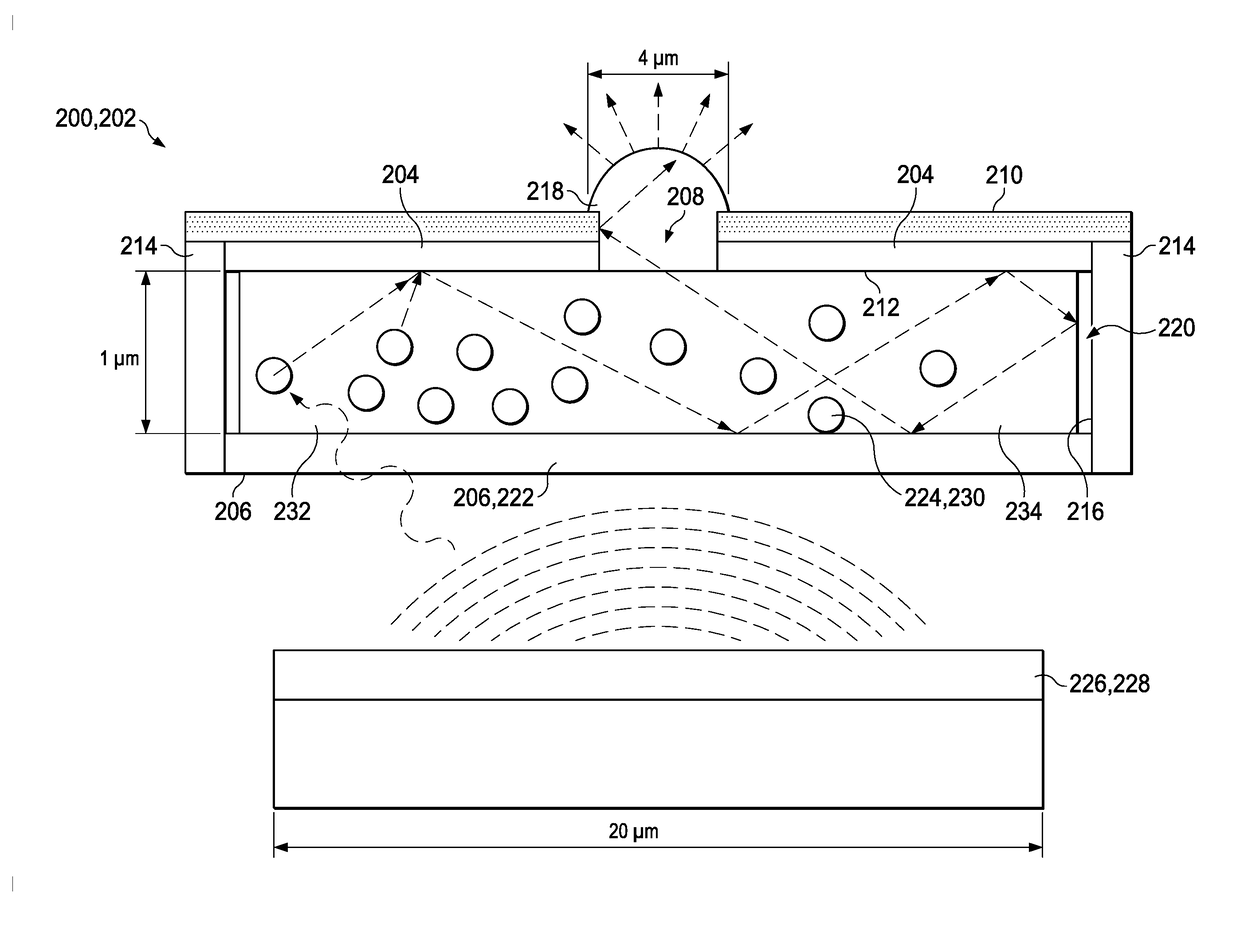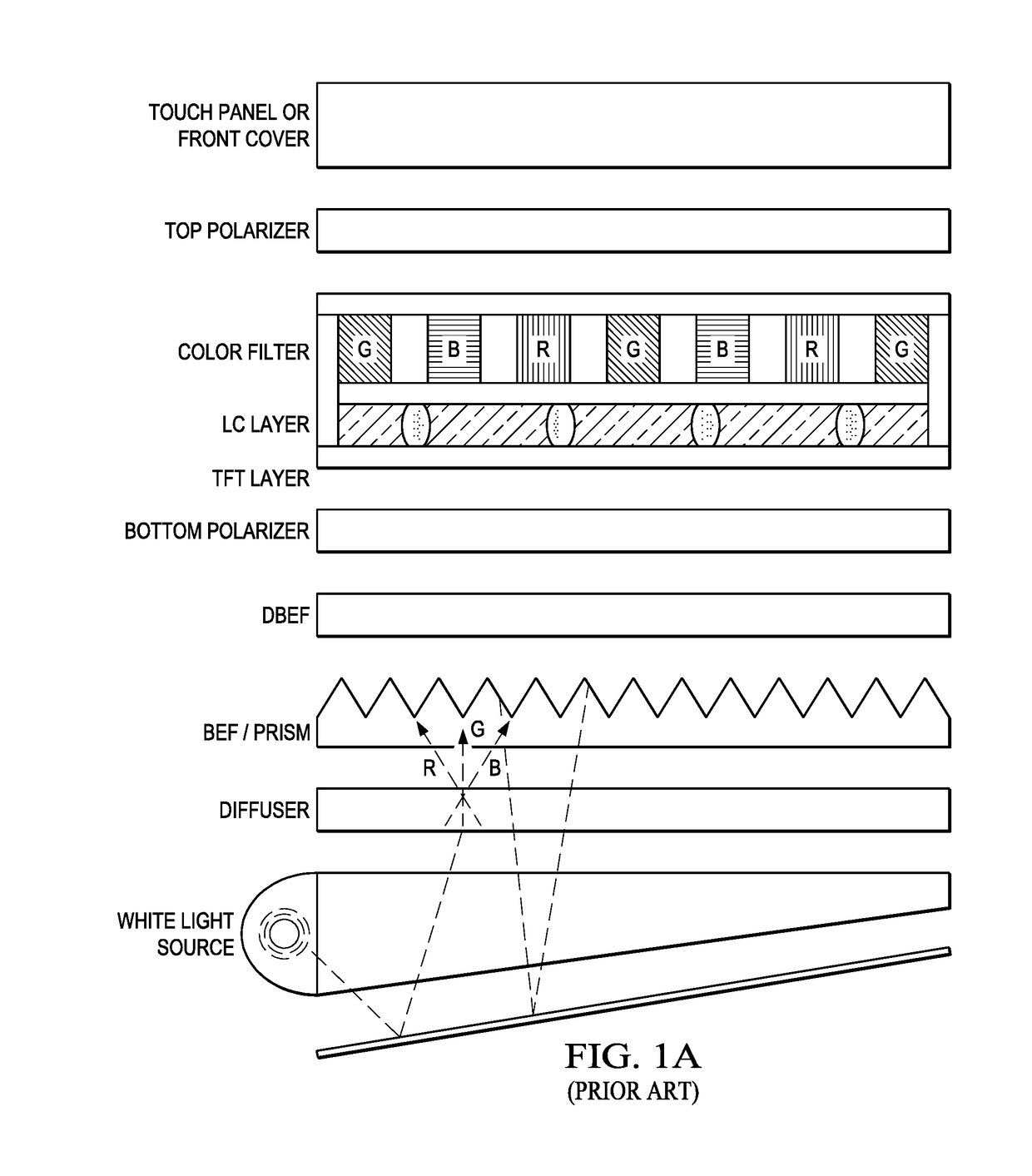Optical microcavity for a high-contrast display
a high-contrast display and microcavity technology, applied in the field of optical display technology, can solve the problems of high power requirements, significant limitations of color filters, and substantial losses in optical intensity, and achieve the effect of improving the color gamut and output efficiency of advanced displays
- Summary
- Abstract
- Description
- Claims
- Application Information
AI Technical Summary
Benefits of technology
Problems solved by technology
Method used
Image
Examples
Embodiment Construction
[0015]The present disclosure provides a new design architecture for advanced displays that utilizes an optical microcavity to produce color output. The new design may reduce or eliminate the need for color filters and polarization filters, the former of which tends to be a major detriment to obtaining high optical efficiencies in conventional backlit LCDs, and the latter of which is often required to enhance ambient contrast in both LCDs and OLEDs. Incorporation of the optical microcavity into backlit LCD and OLED devices may lead to a reduction in the required power as well as improved display performance.
[0016]Referring now to FIG. 2, an optical microcavity 200 for a high-contrast display includes an enclosed cavity 202 comprising a front wall 204 and a back wall 206, where the front wall 204 includes a pinhole opening 208 for emission of light from the cavity 202, and the back wall 206 is configured to generate or transmit light into the cavity 202. The back wall 206 may also be ...
PUM
| Property | Measurement | Unit |
|---|---|---|
| light reflectivity | aaaaa | aaaaa |
| reflectivity | aaaaa | aaaaa |
| photon extraction efficiency | aaaaa | aaaaa |
Abstract
Description
Claims
Application Information
 Login to View More
Login to View More - R&D
- Intellectual Property
- Life Sciences
- Materials
- Tech Scout
- Unparalleled Data Quality
- Higher Quality Content
- 60% Fewer Hallucinations
Browse by: Latest US Patents, China's latest patents, Technical Efficacy Thesaurus, Application Domain, Technology Topic, Popular Technical Reports.
© 2025 PatSnap. All rights reserved.Legal|Privacy policy|Modern Slavery Act Transparency Statement|Sitemap|About US| Contact US: help@patsnap.com



